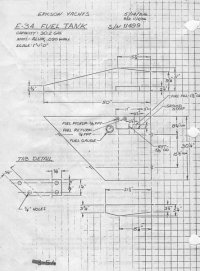Empirical Data time.....
Time for some real world data.

When you take the tank down to starvation level and have to reprime the line to the engine.....
First: add one gallon and: 1) note what the guage reads, 2) go thru the bleed procedure and get 'er running.
Second, add more fuel, a gallon at a time, and keep noting the guage position and also make your tick-marks on a notepad as you do so.
When the tank is full, you will have a useful (and non linear!) picture of what the float guage is really telling you AND you will know for sure what the capacity of the tank really is when you tally up all those marks.

Sidebar: After I installed the new custom fresh water tank, I poured water into it with a one gallon jug. Good thing I made a mark on the pad for each jug poured... when full I had 38 marks!
Since that tank has no guage, I also made a wood batten sounding stick with 5 gallon marks on it as a backup measurer.
My fuel tank has a direct-read mechanical dial on the top with a float arm inside -- it "measures" a non-square tank with a linear set of dial markings. Life always has its compromises... I remember that the last quarter tank is really less than a quarter of the total showing on that guage.

Perhaps you need a quiet day at the fuel dock, a helper to write down the information, and... be in a scientific and comtemplative mood.
Tedious, but not rocket science.
Best,
Loren in PDX




 Everything else was installed later.
Everything else was installed later.